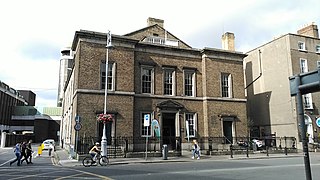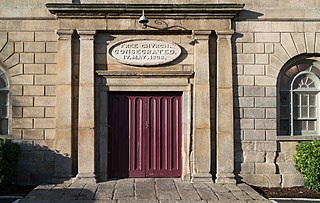| The Molyneux Asylum for Blind Females | |
|---|---|
 Molyneux Church and Asylum, Leeson Street Upper, Dublin, 1860 | |
| Location | |
 | |
Peter St., later Leeson Park | |
| Information | |
| School type | Asylum for blind females |
| Religious affiliation(s) | Church of Ireland (Anglican) |
| Opened | 1815 |
| Closed | 2012 |

The Molyneux Asylum for Blind Females was opened June 1, 1815 in Peter Street, Dublin, in what was formerly the residence of Thomas Molyneux (1641-1733), whose sister-in-law, Lucy Domville, had been blind. The building had been sold to Philip Astley, operating as Astley's Amphitheatre from 1789 to 1812, then the actor Henry Johnstone, intended to develop it as a theatre, however it reverted back to the Molyneux and was leased to a charity as an asylum for blind women. [1] There was an Anglican church (Christ Church) attached to the asylum. [2] Music was an important part of the school and worship in the chapel. [3] R.W. Beaty was an organist and music instructor from 1824. Henry Charles Shellard was organist and choirmaster from 1901 to 1955. [4] The chapel was called the Albert Chapel, honoring the Queen's Husband. [5]
Contents
- Molyneux Asylum Chapel (Christ Church)
- Clergy and People associated with the Molyneux Asylum and Christ Church, Leeson Park
- References
It was an exclusively Protestant institution, with all pupils educated in the principles of the Church of England. [6]
A new home for the asylum, along with a church, was constructed between 1860–1862 at Leeson Park. The architect, selected after a competition, was James Rawson Carroll. [7] The adjoining Christ Church Chapel was consecrated in 1868. [4]
The first chaplain was Rev. John Crosthwaite MA; another early chaplain to the asylum was Rev. Piers Edmund Butler. [8] Later came Rev. Dr. Charles Marley Fleury, in Peter St. and continuing with the move to Leeson Park. Rev. William R. Smith, a Rev. Arthur Thomas was a resident chaplain. Chaplain in the mid-19th century was Rev. James Metge, of Carlow. John Duncan Craig was chaplain from 1873 to 1884. [9] Rev. E. Marks and Rev. J.C.Lloyd served as Chaplains. The future Bishop Albert Hughes was a chaplain in the 1920s and 1930s.
Over the years the term Molineux House and Molyneux Institute for Blind Females, began to be used, dropping the outdated word Asylum in the name.
The building became a nursing home, with accommodation for 25 clients. The last client left in 2012, and the leeson park building was sold in 2015 for over 3million euro. [10] The Leeson Park Building and Chapel, are Listed Buildings. The Molyneux Home mission continues in partnership with St John's House, St Mary's Home and under the umbrella of the Protestant Aid, with the development of a new Nursing home at St. John's Merrion Rd. [11]
After the move to Leeson Park, the Molyneux House on Peter Street and Bride Street was used as a hospital and then a night shelter by the Salvation Army; its Chapel was still used by the Church up until the 1920s. In 1943 it was developed by Jacob's Biscuit factory; some of the Chapel walls are incorporated into newer buildings. [12]








